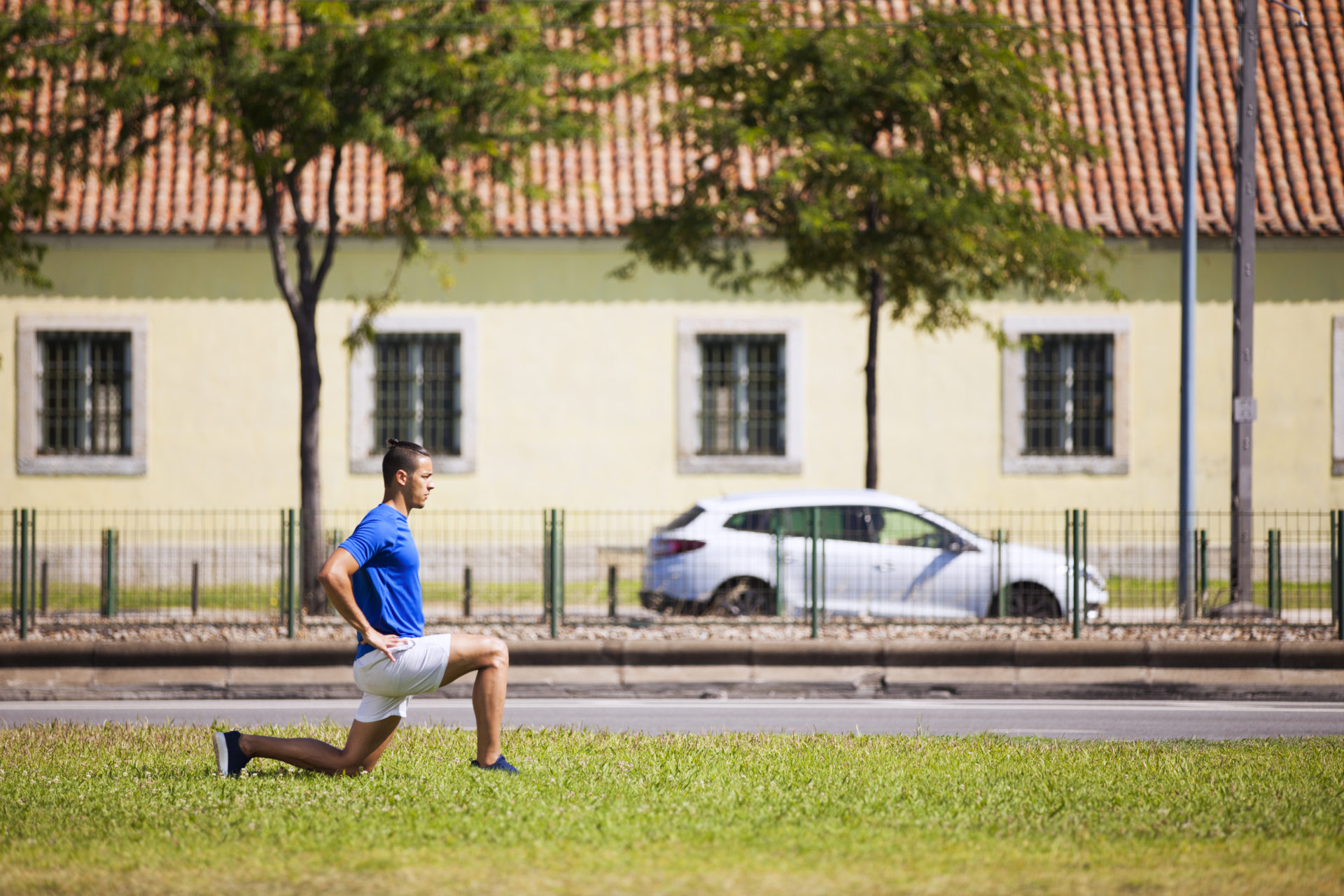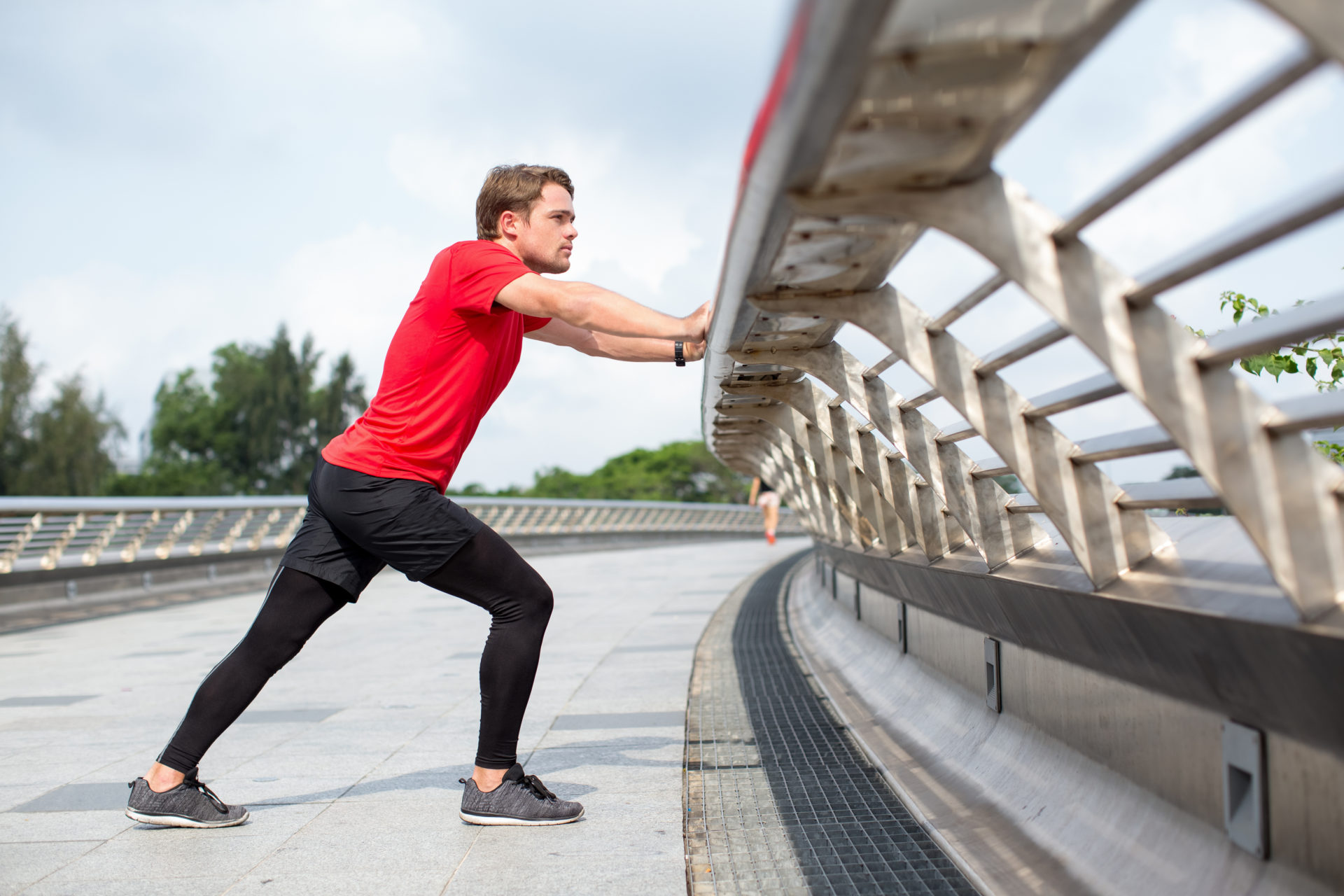Prepare the body for exercise by increasing blood flow and moving the joints through their full range of motion

An adequate warm up and cool down are probably the most underrated components of a novice or recreational athlete’s training. Professional athletes understand the importance of a warm up and cool down for preventing injuries, improving performance and aiding recovery. While not everyone can have the coaching team of a professional athlete, the Exercise Physiologists at Bodytrack have provided an example of a warm up and cool down that’s perfect for runners.
Dynamic Running Warm up
A dynamic warm up uses movement to prepare the body for exercise by increasing blood flow and moving the joints through their full range of motion, ensuring your body is ready for the higher intensity work required for your run. Dynamic movements are great for a warm up, while static stretches (the traditional stretch and hold), are best saved for your cool down.
By the end of your warm up, you should have a light sweat and feel both physically and mentally prepared to run
Use a flat area allowing roughly 20m to complete 2 laps of each exercise, building intensity as you go.
 High Knees Keep your torso upright and tall, aim to get your knees to waist height, staying light on your feet.
High Knees Keep your torso upright and tall, aim to get your knees to waist height, staying light on your feet.
Butt Kicks Focus on the posture of your upper body and arm swing, while staying light on your feet.
Side Hurdles Lift the knee up in front of you, then rotate the leg out to the side to open up your hips, return the leg to the centre, then swap legs. Focus on your posture, arm swing and keeping your hips facing directly forward throughout the movement.
Karaoke The Karaoke is similar to the grapevine foot pattern, with emphasis on lifting the front leg high as it crosses over the back leg and twisting the upper body through the thoracic spine to increase the rotation throughout the movement.
Sumo Squats Step your feet wider than hip width apart, with your feet slightly turned out. As you squat, focus on leading with the hips and keeping your knees out and tracking inline with your toes. Then squeeze your glutes and push into ground to stand back up, before pivoting on your front foot to switch sides.

Lunges Focus on keeping your feet hip width apart, as if you’re lunging on train tracks, with your knee stacked directly on top of your ankle. Keep your pelvis tucked under and torso upright to open up the hip flexors as you sink deep into the lunge. Keep your weight in the front foot and drive through your glutes to push up out of the lunge.
Run-throughs Run one lap of approx 20m at 50%, 60% and 70% of your maximum sprint pace
Running Cool Down
You’ve done the hard work, so don’t let it go to waste by skipping out on the cool down! Treating your body to a proper cool down after your run will aid recovery and muscle repair, which means you’re more likely to feel up to completing another run or exercise session instead of having to take a week off just to be able to walk again.
Slowing to a light jog or walk at the end of your run will help to remove the lactate acid accumulated throughout your workout. Follow this up with a static stretching routine and to complete your cool down.
Hold each of these stretches for a minimum of 30 seconds
Hamstrings

Seated Sitting on the ground, straighten one leg out to the side and bend the other leg so that your foot is next to your thigh. Rotate your hips toward your straight leg and maintain a straight back as you bend forward to feel a stretch down the back of your straight leg.
Standing Place one foot out in front, keeping both feet pointing forward and softening the knee of your back leg. With your hips square and back straight, gently lean forward and push your hips back behind you to feel a stretch down the back of your thigh. Place your foot up on a step or railing to increase the stretch.
 Quads Stand close to a wall or railing, bend your knee taking your heel towards your bottom. Focus on keeping your knees together and gently pull your heel closer towards your bottom, until you feel a stretch down the front of your thigh. If you can’t reach your foot, use a towel, looping it around your foot and pulling it towards you.
Quads Stand close to a wall or railing, bend your knee taking your heel towards your bottom. Focus on keeping your knees together and gently pull your heel closer towards your bottom, until you feel a stretch down the front of your thigh. If you can’t reach your foot, use a towel, looping it around your foot and pulling it towards you.
Glutes
Supine Lay on your back with your legs bent and your feet on the floor. Lift one leg and cross that ankle over the opposite knee in a figure-4 position. Reach between your legs to grab the back of your knee of the leg that’s still on the ground, then pull both legs in towards your chest. You can use use slight pressure from the ‘non-stretching’ leg to push the ‘stretching’ leg toward the chest.
Seated Sit on a chair with your sit bones on the edge of the chair and your legs straight out in front of you. Place your ankle on top of the opposite knee or shin, dropping the knee of the crossed leg towards the floor until you feel a stretch. You can increase the stretch by positioning your ankle further up on the opposite leg or by gradually bending your straight leg and slightly leaning forward.
Hip Flexors Standing tall, step one foot back behind you in a lunge position. Tuck your pelvis under and push your hips forward until you feel a stretch in the front of the hip of your back leg. Tuck your pelvis more to increase the stretch, rather than sinking lower into the lunge. You can also lift the arm on the same side as the back leg and lean your torso slightly back and away to increase the stretch all the way up your side.

Calves Stand with one foot in front of the other, keeping the heels on the ground and the toes pointing forward. Bend the front knee, moving your body forward until you feel a stretch in the calf of the back leg. Focus on keeping your heel on the ground and your back knee straight. You can increase the stretch by dropping your heel off the edge of a step or using an incline board.
Quadratus Lumborum Sit up tall with your legs apart in a V. Place one hand under the knee on the same side with your palm facing upwards to act as a lever. Lean over to that side, using your hand to pull yourself forwards and down. You should feel a stretch in the muscles in your lower back on the opposite side to the way you are leaning. If you have tight hamstrings, slightly bend your knee to focus the stretch more in the lower back.
Adductors Take a big step out to the side, keeping both feet flat on the ground with your toes slightly turned out. Shift your weight to one side, bending that knee and sinking the hips down to feel a stretch along the inside of the thigh of the straight leg.
Now that you’ve cooled down, you might like to check out Sports Dietitians Australia suggestions for Recovery Nutrition. Our Exercise Physiologists also recommend including Mobility sessions into your training program, in addition to your warm up and cool down. Get in touch with one of our Exercise Physiologists to find out how to Exercise Right for Running!
